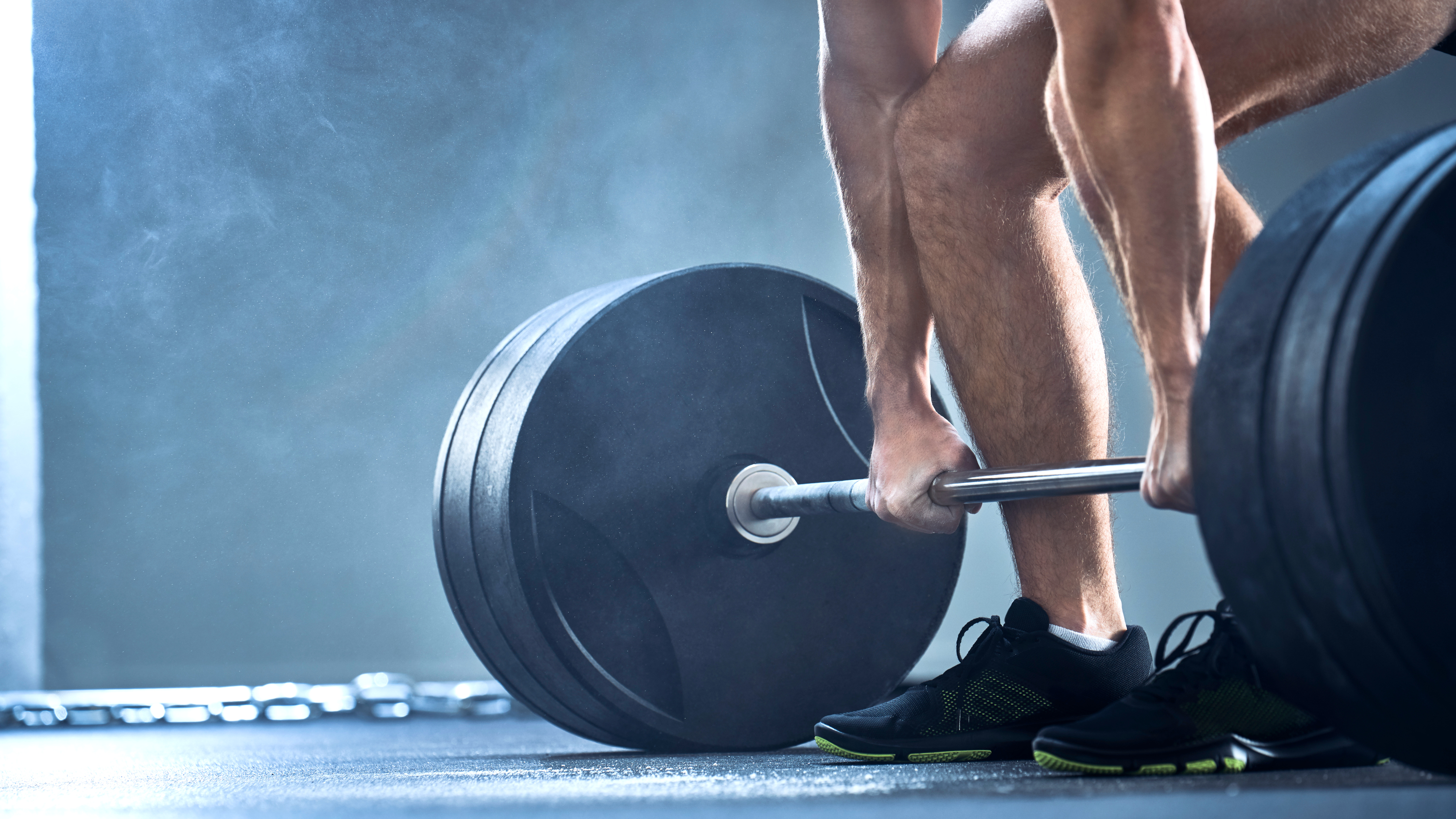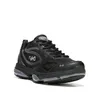What is the 6-12-25 method and is it good for building muscle?
Ready for a hypertrophy pump?

So you’ve heard of the 12-3-30 treadmill workout and its fat loss benefits but how about the 6-12-25 method for its strength and muscle-building advantages?
The 6-12-25 method is a form of hypertrophy training and according to one of Nike’s strength and conditioning coaches, Courtney Fearon, is a method that leans on something called ‘Giant Sets’.
Now before you are put off by the word ‘giant’ in the context of weight training, Fearon assures us that this workout method is worth the graft. He also has an abundance of advice on how to stay safe while getting the most out of the 6-12-25 workout method.

Courtney is a Nike Global Trainer specialising in Strength & Conditioning and Pilates. Fearon’s goal is to get you moving - while educating and moving you on along the way. He knows you need to smile and enjoy the hustle because showing up is essential to any success.
What is the 6-12-25 method?
“The 6-12-25 workout method was popularised by Charles Poliquin, a highly respected strength coach and fitness expert,” Fearon tells us. Poliquin was well-known for his innovative and highly effective training methods that were based on both scientific principles and extensive practical experience.
But what does the workout look like? Here's how the structure works:
- 6 reps of a heavy compound exercise
- 12 reps of a moderate compound or isolation exercise
- 25 reps of a lighter isolation exercise

The 6-12-25 method is designed to exhaust the target muscle group completely with each set by challenging them through the different loads, rep ranges and pattern variation.
“The key idea is that different muscle fibers respond to different rep ranges, and by incorporating a range of intensities and volumes within a single workout, you can stimulate significant muscle growth and adaptation as well as all-round fitness improvements,” Fearson explains.
Get instant access to breaking news, the hottest reviews, great deals and helpful tips.
What are the benefits of the 6-12-25 method?
The fruits of your labour with the 6-12-25 method can be many, here are the main benefits according to Fearon.
Muscle hypertrophy:
Fearon says, “By working the muscle group through various rep ranges, you maximize muscle fiber recruitment, which is the basis of muscle development and growth.”
Additionally, according to a study published in the Journal of Strength and Conditioning Research three of the key components of muscle growth are metabolic stress, mechanical tension and muscle damage, all of which the 6-12-25 method ticks off.
Strength development:
The heavy compound exercises at the beginning of the method help in building strength by engaging fast-twitch muscle fibers and heightening the nervous system to shift the heavier reps.

Endurance improvement:
“The high-rep exercise at the end enhances muscular endurance and stamina, especially with the cumulative fatigue from the previous exercises,” notes Fearon.
He adds that there is also something to be said for the mental endurance when approaching the end of these giant sets, something that can be overlooked when we fall into the trap of just focusing on the more visual gains of a workout.
Time management:
The 6-12-25 method is a good way to keep up the volume of you exercise while reducing your time spent in the gym, or at home if you are working with your own weights, such as the best adjustable dumbbells.
Metabolic boost:
“The combination of different exercises creates a longer ‘working time’ for each set,” explains Fearon, “Therefore aerobic demands are up and with minimal rest, the metabolic impact can be positive for body composition post-workout.”
How do you apply the 6-12-25 method to your training?
You can apply the 6-12-25 method to various muscles, but as an example, Fearon has suggested how you could apply the training principle to your back muscles.
1. Bent-over row (6 reps): A heavy compound exercise focusing on maximum strength.
2. Lat pull downs (12 reps): A moderate compound exercise challenging the back in a different pattern to the bent-over row.
3. Reverse cable flys (25 reps): A lighter, more isolated exercise to fully fatigue the muscles.
After performing these three exercises back-to-back, you’d rest for three minutes then repeat for 3-5 sets.
Tips for getting the most out of the 6-12-25 method
Warm up:
Take care when training with weights, especially with the 6-12-25 method. Follow Fearon's advice: mobilize the joints, raise your body temperature, prepare your nervous system and mind, and practice movements with little or no load first.
Form:
Proper form prevents injury and boosts results. Fearon warns against neglecting form. If unsure, ask a member of staff at the gym you attend or, if you train from home, look for tutorials with a qualified trainer behind them.
Weight selection:
Choose challenging weights that challenge you and allow you to maintain good form. Adjust as needed to avoid compromising technique or effort. Fearon says, "Each exercise and set should feel like an 8 or 9 out of 10."
Progression patience:
Start with lighter loads to get used to the method and build confidence then you can start to gradually increase weight as your strength and endurance improves.

Listen to your body:
Pay attention to discomfort or pain. Muscle fatigue is normal, but if something feels off, stop and reassess. Learn the difference between good and bad pain.
Rest and recovery:
Schedule quality rest between sessions targeting the same muscle group and take regular breaks for overall recovery. Fearon emphasizes that recovery is crucial for progress.
Hydration and nutrition:
Stay hydrated and fuel properly before and after workouts. Fearon notes, "Getting the right nutrients, protein rich foods and a balanced diet to support muscle repair and growth is another pillar of how to stay safe and maximize results."
Can you do it with the 12-3-30 treadmill workout?
The 6-12-25 method is a great way to progressively overload your muscles and build strength. And while techniques like high-intensity resistance training (HIRT) are a great way to raise your heart rate and get a cardio boost from strength workouts, you may want to alternate your muscle-building sessions with cardio-focused exercise.
If you're a fan of number-based training methods, then it's worth considering the 12-3-30 treadmill workout. Unlike the 6-12-25, it's not bound by reps, but by time. The aim is to do 30 minutes on one of the best treadmills, walking 3mph at a 12% incline.
And while 6-12-25 is focused on challenging your muscles, 12-3-30 is more about adding movement into your day. Initially, these sound like contradictory training plans; push yourself with weights, take an uphill stroll on a treadmill. But adding small amounts of movement into your day can have a positive effect.
This is thanks to a technique known as NEAT, Non-Exercise Activity Thermogenesis. It sounds complex, but this really just means increasing the amount of time you're active outside of dedicated workout sessions. This can help boost your wellbeing (especially if you're able to head outside) and it's a sustainable way to keep your body moving.
Building muscle is a great way to protect your body as you get older, especially if you keep a focus on developing core strength, but it's important to keep active and moving all day, not just for 30 minutes at the gym. So, on your rest days between 6-12-25 workouts, add in the occasional 12-3-30 to make your sessions varied.
More from Tom's Guide
- Progressive overload: What is it, and how does it help build muscle and strength?
- High reps vs heavy weights: which is better for building muscle?
- How much protein do you need to build muscle?

Jessica has been a fitness writer at Tom’s Guide since 2023, bringing three years of experience writing about health, fitness, and the great outdoors. Her passion for exercise began during her childhood, where she spent weekends hiking and competing in local athletics club events. After earning a master’s degree in journalism from Cardiff University, Jessica found the perfect way to combine her love of storytelling and fitness into a career.
Jessica is passionate about testing fitness gear and tech, using her reviews to help readers make informed buying decisions. She ran her first marathon in April 2024, finishing it in 3 hours and 48 minutes. Through her training, she’s developed a deep understanding of what it takes to grow as a runner, from effective workouts and recovery techniques to selecting the right gear for every challenge.
When she’s not at her desk, Jessica enjoys spending time in the kitchen crafting new recipes, braving cold water swims and hiking.









